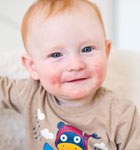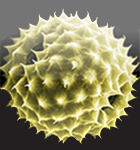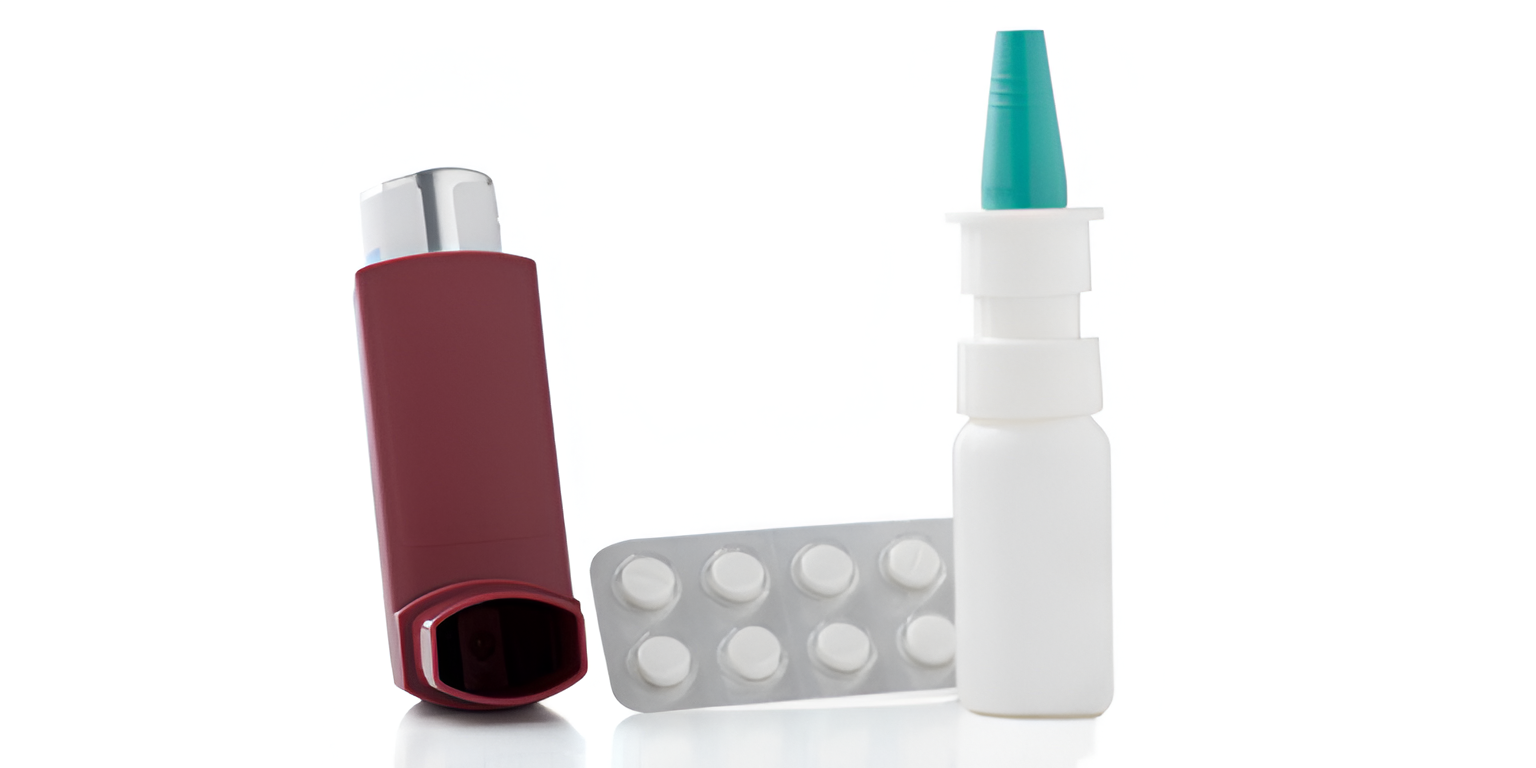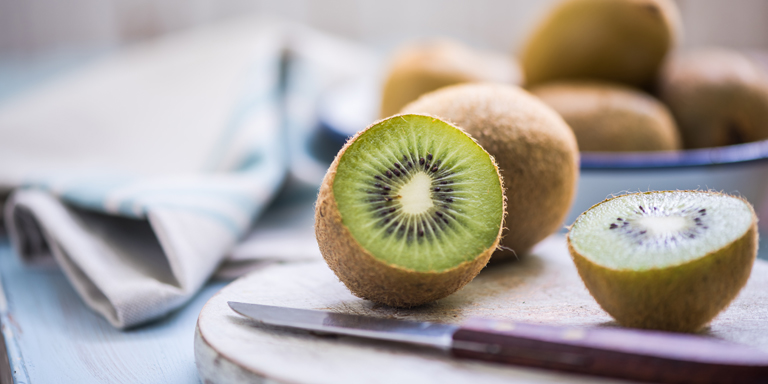Pollen allergy (hay fever)
Pollen allergy (hay fever) is the most common allergic disease in our part of the world. Sufferers react to one or more types of pollen, most often to grass.
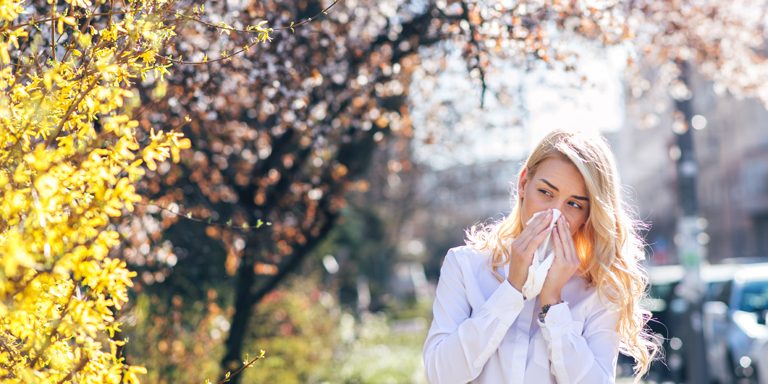
Table of contents:
Typical symptoms of hay fever are sneezing attacks, runny nose and streaming eyes. It rarely appears before the third year of life. As a rule, the symptoms do not start until school age. Out of around 3500 plants in Switzerland, only about 20 have any significance for pollen allergy sufferers.
Triggers
Pollen allergy (hay fever) is a reaction to one or more types of pollen; the predisposition to pollen allergy is often inherited. It involves the immune system reacting to the proteins of pollen, which in themselves are harmless. As a result of inhalation or direct contact with pollen, histamine and other substances are released in allergy sufferers, leading to inflammation of the conjunctiva of the eyes and the lining of the nose.
The three main groups of plant that trigger a pollen allergy are:
- Trees: hazel, alder, ash, birch, hornbeam, oak
- Grasses: timothy, cocksfoot, English ryegrass
- Weeds: mugwort, ragweed (Ambrosia artemisifolia)
Symptoms
The following symptoms may occur with hay fever:
- sneezing attacks
- runny nose (rhinitis)
- blocked nose
- difficulty breathing through the nose
- itchy and streaming eyes (conjunctivitis)
- itching in the palate, nose and ears
- hoarseness
- irritation of the throat
- A build-up of mucus in the paranasal sinuses can cause headaches and jaw pain.
Pollen allergy left untreated over a long period of time can develop into allergic asthma. This process is known as progression.
Diagnosis
The diagnosis is based on a detailed medical history and skin and blood tests. Similar symptoms can occur with house dust mite, mould and animal allergy. Differences can mainly be identified in the place and time of onset of the symptoms. This is why it is worth observing the symptoms accurately.
Treatment
Various medicines in the form of nasal sprays, eye drops or tablets / drops can be used to treat the symptoms of pollen allergy. The most important groups of active substances include antihistamines, corticosteroids (cortisone), leukotriene antagonists and mast cell stabilisers. More information about the active substance groups and their mechanisms of action can be found on the separate page on pollen allergy treatment. Desensitisation/allergen-specific therapy is to date the only available causal treatment for the symptoms of pollen allergy. It requires investigation by an allergy specialist. Certain complimentary medicine therapies can also relieve the symptoms successfully. Which form of treatment is suitable should be discussed with the relevant therapist.
Tips and tricks
Knowing which types of pollen are in flight and when helps avoid them better. Precise information about pollen flight in Switzerland can be found at www.pollenundallergie.ch and on our pollen news app (both in German, French, Italian). The European pollen flight data are published in various languages at www.polleninfo.org.
To reduce the symptoms:
- During the pollen season, windows should only be briefly opened wide to air rooms. In long rain spells and if the windows are fitted with pollen screens, rooms can be aired more generously.
- Daily vacuuming. Use a vacuum cleaner with a HEPA filter or a certified filter-less model.
- Regularly clean carpets and furniture.
- Fit pollen filters in your car and keep well maintained.
- Wear sunglasses outside.
- Wash your hair in the evening to ensure that as little pollen as possible gets into your bed.
- Take off the clothes you have been wearing before entering the bedroom
- Do not dry laundry outdoors.
- Rinse the nose with saltwater spray or saline in the morning and evening.
- Wear a pollen filter or a surgical mask for the nose.
- When pollen levels are high, during fine, windy weather, it is advisable only to stay a short time in the fresh air.
- Adapt your leisure activities to the pollen count, e.g. indoor and water sports etc.
- Consider the prevailing pollen count when choosing a holiday destination.
- Avoid eating foods to which you have a pollen-associated cross-reaction.
- Avoid cigarette smoke (passive and active), as constant irritation by smoke increases the sensitivity of the lining of the airways.
- When shopping, look out for products with the Allergy Seal of Quality, these are particularly suitable for people with allergies and intolerances and are recommended by aha! Swiss Allergy Centre.
Facts and figures
In Switzerland around 20% of the population suffer from a pollen allergy. The majority – 70% – are allergic to grass. The flower of a single blade of grass contains around 4 million flower pollen grains. Fir (and spruce) pollen, visible as a yellow dust-fall, is only very rarely allergenic; only a few people have a reaction to it. However, as it occurs in such large amounts, it can nonetheless cause irritation of the conjunctiva.
Editors: aha! Swiss Allergy Centre in co-operation with the Scientific Advisory Board.

